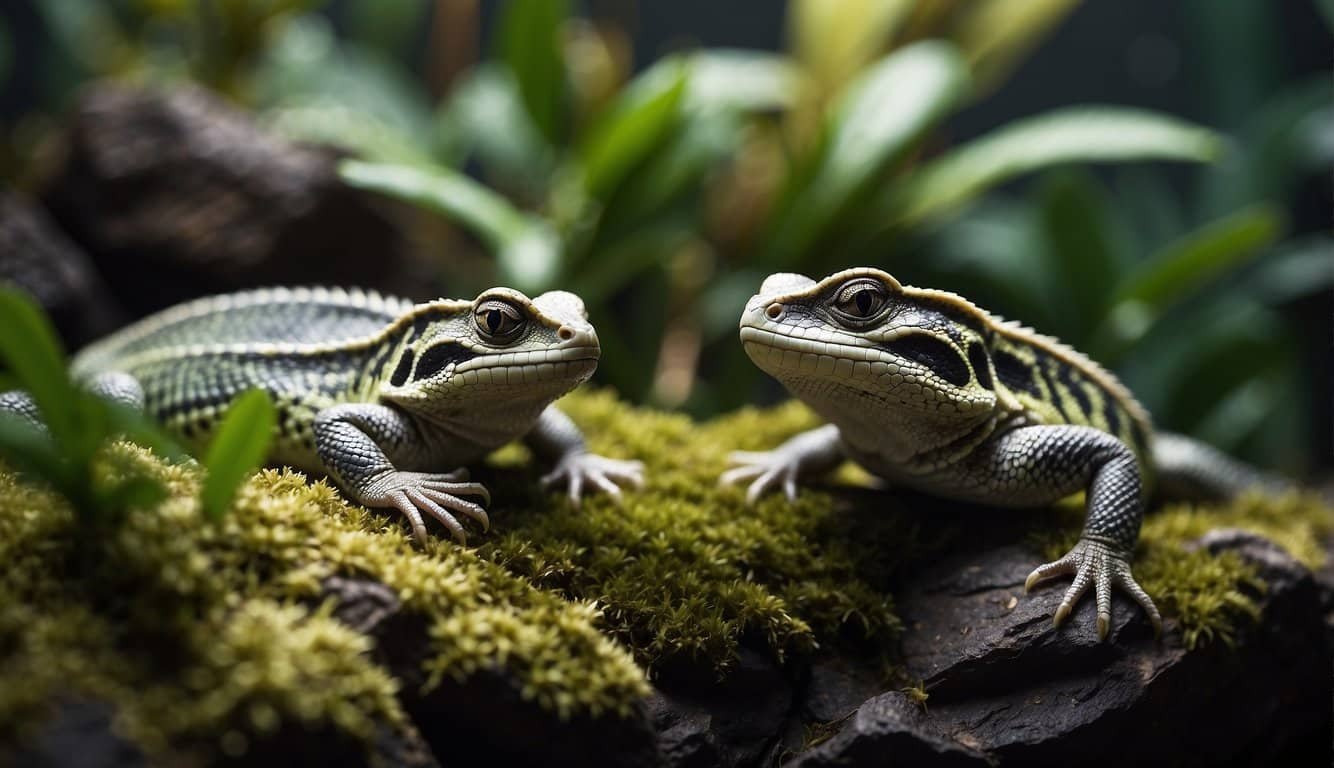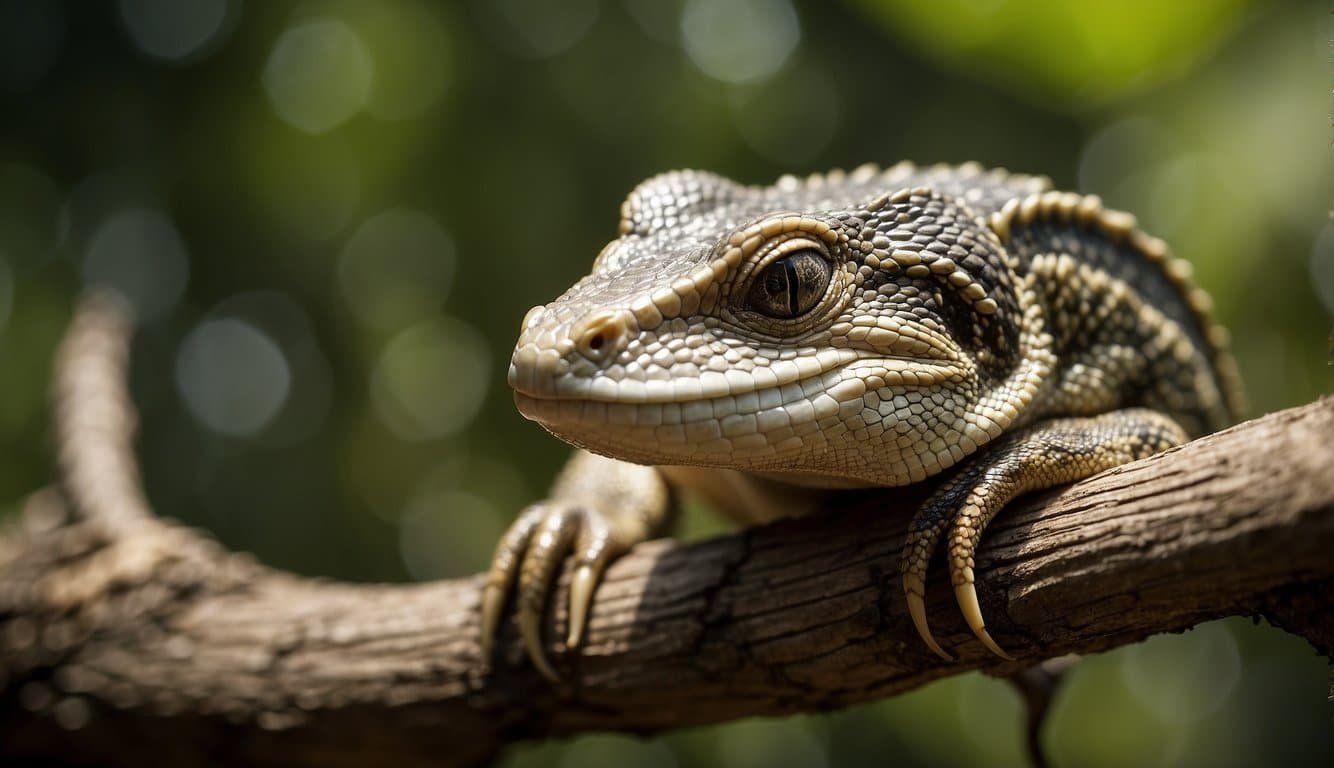Reptile Diversity and Classification
Reptiles are a vast and diverse group of vertebrates that have adapted to a variety of environments on Earth. With their rich evolutionary history and intriguing adaptations, these cold-blooded animals have fascinated scientists and the public alike.
Defining Reptiles
Reptiles, belonging to the class Reptilia, are characterized by their scaly skin, which provides protection and minimizes water loss. Unlike mammals and birds, reptiles are ectothermic, relying on external heat sources to regulate their body temperature. This group includes species ranging from the familiar snakes and lizards to the less common tuatara.
Major Orders and Species
There are four major orders within the class Reptilia:
- Testudines: This order encompasses turtles, including the largest of them all, the leatherback sea turtle.
- Crocodilia: Home to crocodiles and alligators, with the saltwater crocodile known for its impressive size.
- Squamata: The largest order, consisting of snakes and lizards like the venomous Gila monster.
- Rhynchocephalia: Represented by a single species, the tuatara, a relic with lineage dating back to the dinosaurs.
Evolutionary History
The fossil record traces reptiles back to the ancient synapsids, which are common ancestors they share with mammals. Rising prominently during the Mesozoic Era, reptiles, including the now-extinct dinosaurs and ichthyosaurs, diversified into a wide array of forms.
Physical Characteristics
Reptiles are known for their tough, keratinous scales or scutes. Their skin can be simple as seen in lizards or more complex with bony plates beneath, as in crocodiles. Reptilian physical characteristics like the structure of the lower jaw and the ear distinguish them from other animals.
Adaptations to Environment
Reptilian adaptations are impressive, ranging from the ability to absorb water through skin to behavioral adjustments like basking in the sun or seeking shade to manage body temperature. As ectotherms, these external behaviors are crucial for their metabolism and survival.
Reproduction Methods
Reptile reproduction varies from species to species. Some lay eggs, like many turtles, while others, such as many species of vipers, give birth to live young. Eggs can be deposited in a variety of environments, with some reptiles exhibiting parental care by guarding their eggs until they hatch.
Reptile Behavior and Interaction

Reptiles are an incredibly diverse group of vertebrates ranging from the mighty saltwater crocodile to the tiny gecko. Their behaviors and interactions are influenced by their environment, physiology, and the need for survival.
Dietary Habits
Reptiles display varied dietary habits; some are carnivorous like the Komodo dragon, ambushing prey with a venomous bite, while others are herbivorous, such as tortoises that graze on grasses and leafy material. The python, a carnivore, can consume animals as large as antelopes, illustrating the adaptability of reptilian diets.
Defense Mechanisms
These cold-blooded creatures have developed a range of defense mechanisms over time. The viper, for example, uses its venom to ward off threats and capture prey. Crocodilians like the American alligator possess powerful jaws as a means of protection and to assert dominance over territories.
Habitats and Distribution
Reptiles inhabit diverse environments across the globe, from the land-dwelling tortoise in the savanna to the aquatic gharials of India’s rivers. The leatherback sea turtle, highly migratory, spans oceans, highlighting their adaptability to various habitats. The ability to thrive in multiple environments has allowed reptiles to distribute widely.
Conservation and Threats
Many reptile species, like the critically endangered gharial, face the threat of extinction. Habitat loss, climate change, and human activities such as poaching have had significant impacts. Conservation efforts in places such as the United States have been instrumental in protecting species like the American alligator from the brink of extinction.
Physical Anatomy and Physiology

Reptiles, a diverse group of vertebrates, boast a variety of physiological systems that allow them to thrive in many environments. Among these systems, their unique respiratory, circulatory, and reproductive strategies particularly stand out, all adaptations to maintain a stable body temperature and metabolic function as ectotherms.
Respiratory System
Reptiles’ respiratory systems have evolved for efficiency. Scales, by minimizing water loss, indirectly aid in conserving energy for metabolic processes. Most reptiles breathe using lungs, and air-breathing vertebrates, such as turtles, lizards, and snakes, possess distinct lung structures—some with a single lung, others with paired organs, optimizing respiratory function across the group.
Circulatory and Thermoregulatory Systems
As ectotherms, reptiles regulate their body temperature through external means, such as basking in the sun. Their circulatory system plays a crucial role by distributing the absorbed heat throughout the body. Heart structure varies among reptiles, with some having a three-chambered heart that helps minimize the mixing of oxygen-rich and oxygen-poor blood, enabling effective thermoregulation.
Reproductive Systems
Reproductive strategies in reptiles include both laying eggs (oviparous) and giving birth to live young (viviparous). The mode of reproduction often influences physical traits in males and females due to their distinct roles. Internal fertilization is common, which necessitates physical contact during mating. Hatchlings usually fend for themselves, as parental care is relatively rare compared to other vertebrates.
Discover more on reptilian digestion in varying temperatures, or dive into the functional anatomy and care requirements in captivity. Explore the complexity of biophysical modeling in understanding reptile physiology and how physical factors impact their ecological and physiological characteristics.

